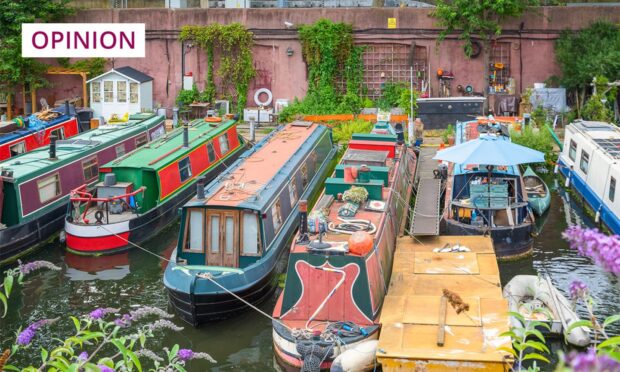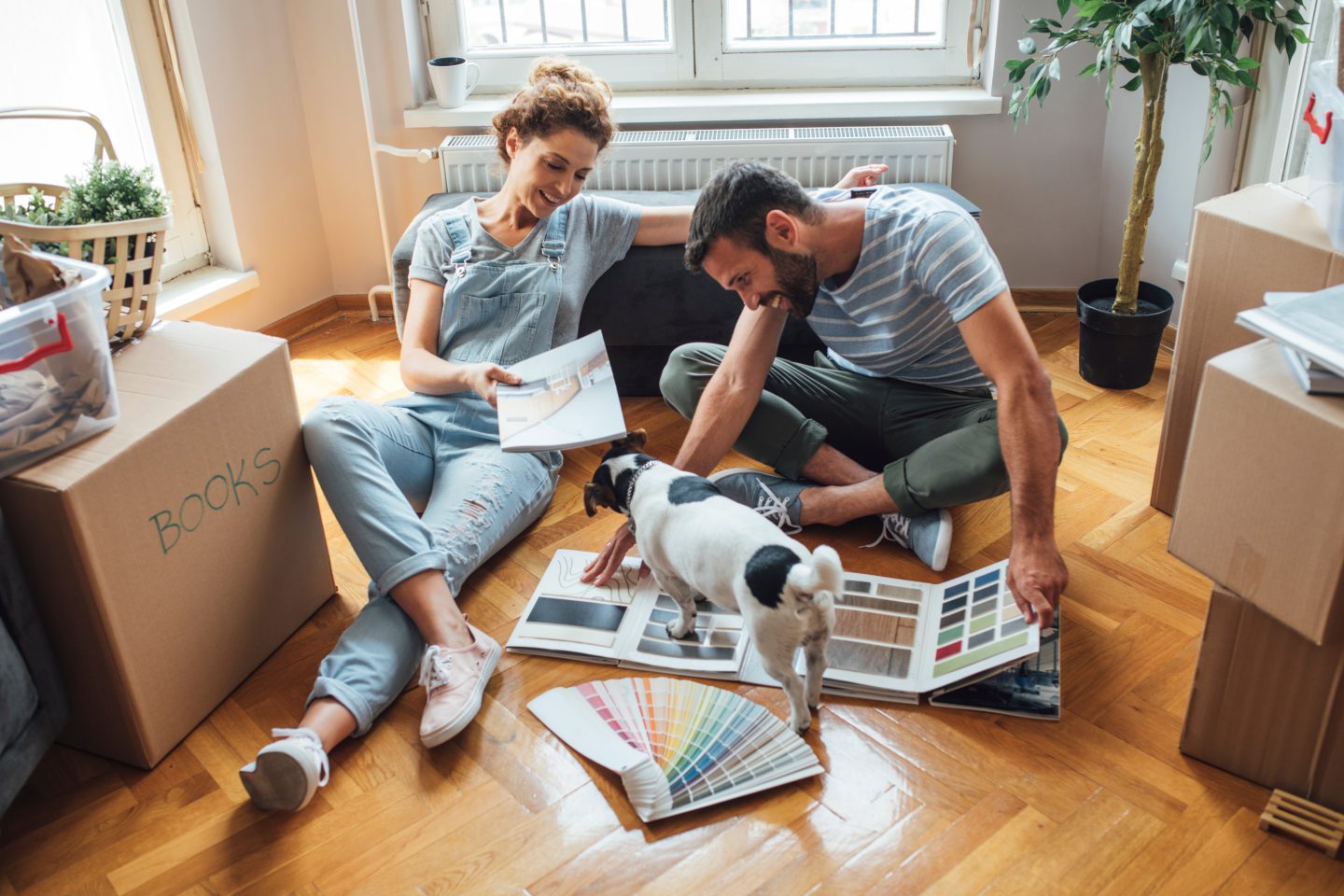This week was my little boy’s third birthday, but it was no usual party.
He had a giant pink three, Barbie-themed cake, and cheesy music on the stereo. The table was strewn with confetti and Party Rings, while the floor was covered with small mountains of discarded wrapping paper.
We have recently moved onto a narrowboat, moored on a marina with 90 other boat-dwellers. Needless to say, we didn’t hold this party on our 50-foot boat, where my husband’s head brushes the ceiling and, with my arms wide, I can reach both walls; our tiny home, where every square inch of space is accounted for, though nothing ever seems to be in the place it’s meant to be.
Instead, we had the party in a communal gazebo on the pontoon, under the shining colossal skyscrapers of London’s Canary Wharf. As we celebrated, our neighbours from other boats came by and wished my toddler a happy birthday. Some stopped for a piece of cake and a chat, and it was an entirely richer experience for a whole community being part of my son’s special day.
As well as the gazebo, the boats berthed in the marina share a communal living room, kitchen, washing machines and tumble dryers, and six very nice bathrooms complete with fancy showers and underfloor heating. And, while our boat – like most others – has its own kitchen and bathroom, it often just feels easier and nicer to use the shared facilities. Essentially, without intending to, we now live in a sort of commune, and I love it.
A new, positive kind of communal living
I am not new to group living. In my childhood, we were very much forced into it by living in homeless B&Bs and halfway houses. My B&Bs of the 1980s and 1990s were full of people, mostly men, who were down on their luck, ex-street homeless, those recovering or about to descend into substance abuse, folk with mental health problems, and our drifting, single-parent family of me, my mum and my baby sister.
We ended up in the hostels and B&Bs so often because we regularly left whatever place we were living in, hurrying onto a National Express coach and declaring ourselves homeless in the social offices of whatever town we’d find ourselves in the next day.
That form of living felt frightening, even as a child – perhaps especially as a child. There was literally no space of our own, and the rest of the community were often mending themselves or breaking themselves chaotically, and certainly shouldn’t have been living in close quarters with a child and a baby.
So, I’m surprised to find myself embracing my current version of communal living. Of course, it depends on everyone behaving decently, calmly and with the community in mind. No one minded that I was playing Lizzo’s song Pink at 12 noon on a Monday, because we were warm and open with our neighbours, tidied up nicely afterwards, and the cake probably helped, too.
My husband, in particular, loves this more sustainable way of living. “It just makes sense,” he says, “We don’t all need one washing machine, one cooker, one bathroom, one fridge per home.” And, though I disagree with him on the fridge, which I am missing greatly, I do concur on all his other points.
Perhaps, especially in evermore crowded urban places, it’s time to accept that the idea of a man’s home being his castle is vastly outdated. In rural areas, especially during lockdowns, it seemed that residents moved more towards the idea of shared resource – supporting neighbours and communicating with them, setting up carpools, shopping trips on rota, and making a note of what was to spare and what others might need.
Though much of this has remained post-pandemic – Facebook bartering and neighbourhood groups, for instance – it seems that homeworking has pushed us into more isolated daily ways of being.
I wonder how different things would be, how much less lonely some would feel now, if we all lived in a more connected, even dependent, way.
A sense of home, warmth and friendliness
Seven years ago, I was living in Bangkok, another city where space is at an absolute premium. Buildings are built sky-high and even the pavements are crowded with street sellers and food stalls.
We lived in a condo complex, and our flat itself was tiny: no bigger than student accommodation. But outside there was a 65-foot pool with sunbeds and swings hanging over the aquamarine water, an air-conditioned gym and several communal study and relaxation areas, a pool table, a simple kitchen, a coffee shop, and a small store where you could buy food to eat in group areas if you did not want to cook in your sweltering shoebox on a single hotplate.
Very few people owned cars, so when we wanted to go further afield there was a scheduled minibus that took residents down to the local market.
I think this building, and the thousands of others like it in Bangkok, was simply designed as a way of accessing a good standard of living at a relatively affordable price. But, in reality, it created – coerced I suppose – a sense of home, warmth and friendliness because everyone’s space and happiness was dependent on behaving respectfully to each other.
When I first moved from Prague and into a Glasgow tenement, someone told me it would only be a week before we got a passive-aggressive note saying that it was our turn to clean the close stairs.
I’m sure there is the marina equivalent of the complex practical and emotional politics of living closely together. But, for now, how lovely it is to live in a community and share our resources so that we can enjoy the beauty of the place we live in, and birthday cake, and get to know each other while doing it.
Kerry Hudson is an Aberdeen-born, award-winning writer of novels, memoirs and screenplays



Conversation